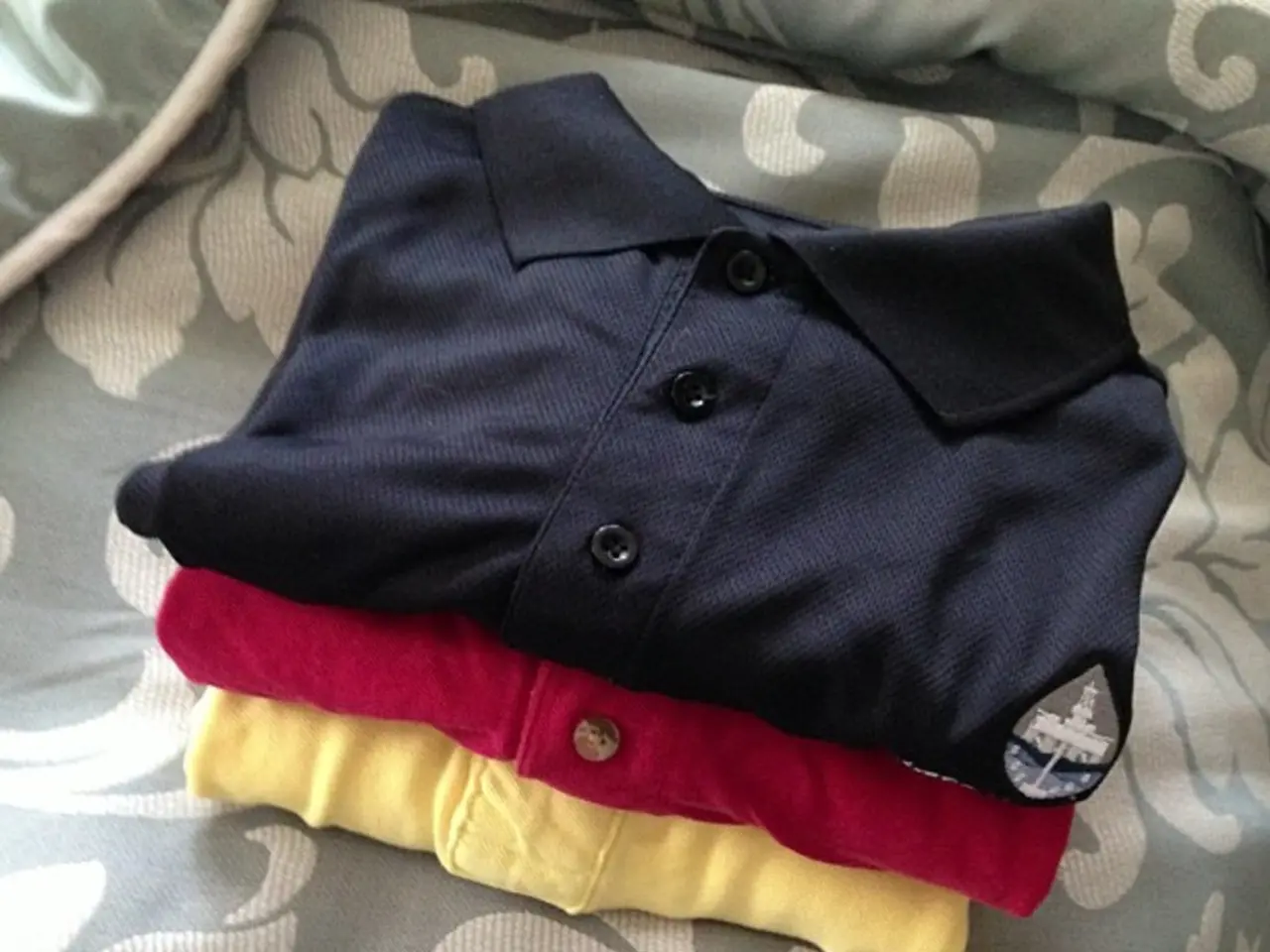Struggling System for Reclaiming Second-hand Clothes Approaches Breakdown
In the heart of Germany, Thuringia is grappling with the challenges of textile recycling. The municipalities are now tasked with collecting old textiles, but the demand for second-hand clothes remains low [1]. This predicament has led providers of old clothes collection containers to withdraw from Quedlinburg and Blankenburg, a consequence of the difficulties in recycling old clothes and the impact of fast fashion [2].
The waste management department of the Ilm district operates the containers, managed by the company FWS Bremen. However, the containers are increasingly being abandoned due to too much other waste ending up in them [2]. This issue is not unique to Thuringia, as the rapid consumption cycles of fast fashion contribute to higher textile waste and complicate recycling processes [3].
Regional initiatives and evolving EU legal frameworks are attempting to address these challenges. Thuringia pioneered a repair bonus program that offered partial refunds on repair costs, aiming to encourage extending product life and promote a circular economy [1]. Although the program was paused, it is planned to continue after 2022.
At the EU level, new rules such as the Ecodesign directive and the Act to Promote Closed Substance Cycle Waste Management (KrWG), which Germany has transposed, are increasing obligations on traders to recycle more and produce less waste [1]. Although many measures under KrWG are still voluntary, amendments since 2020 now require greater "care obligations" from traders, discouraging practices like destroying nearly new returns [1].
Organizations such as the Textile Exchange and certification systems like ISCC promote sustainable materials, potentially supporting better recycling and circularity practices in textiles [3]. These initiatives may gradually influence the textile recycling landscape in Thuringia through supply chain changes and increased sustainability standards.
In the future, the EU has agreed on an amendment to the waste framework directive to implement Extended Producer Responsibility (EPR) for textile and footwear products, but it is not expected to come into effect until 2028 [1]. Under EPR, the costs for further processing and disposal would be covered, at least in part, by the industry itself [4].
EPR aims to encourage textile manufacturers to make their textiles more durable and ensure they can be reused, repaired, and recycled more easily [4]. However, very little old textiles end up in the second-hand business, and the export to other countries is becoming increasingly difficult due to fast fashion [2].
In conclusion, Thuringia is navigating the complexities of textile recycling through regional repair incentives and broader waste laws transposed from EU directives. The challenges posed by fast fashion are exacerbating the strain on the recycling system, making recycling targets harder to meet. The EU regulatory environment is evolving to impose more recycling and care obligations on traders, encouraging waste reduction and circular management in textiles. Sustainable material initiatives at the European level may gradually influence the textile recycling landscape in Thuringia.
- The waste management challenges in textile recycling, fraught with the impact of fast fashion, are not exclusive to Thuringia, extended across industries worldwide.
- In the realm of environmental science, sustainable material initiatives like those by Textile Exchange and ISCC, aim to foster better recycling and circularity practices in both textiles and fashion-and-beauty products.
- To mitigate the burden of textile waste, personal-finance incentives, such as Thuringia's repair bonus program, are pivotal in prolonging product life and adhering to a circular economy approach.
- As part of the ongoing evolution in financial commitments, EU regulations like the Ecodesign directive and KrWG require businesses to take greater responsibility for recycling and waste reduction, aiming to reshape the business landscape.
- The future strategy of Extended Producer Responsibility (EPR) in textile and footwear industries, in conjunction with the EU's agreement, intends to burden the industry itself with recycling costs, ultimately coaxing manufacturers to produce durable, easily reusable, and recyclable textiles.




